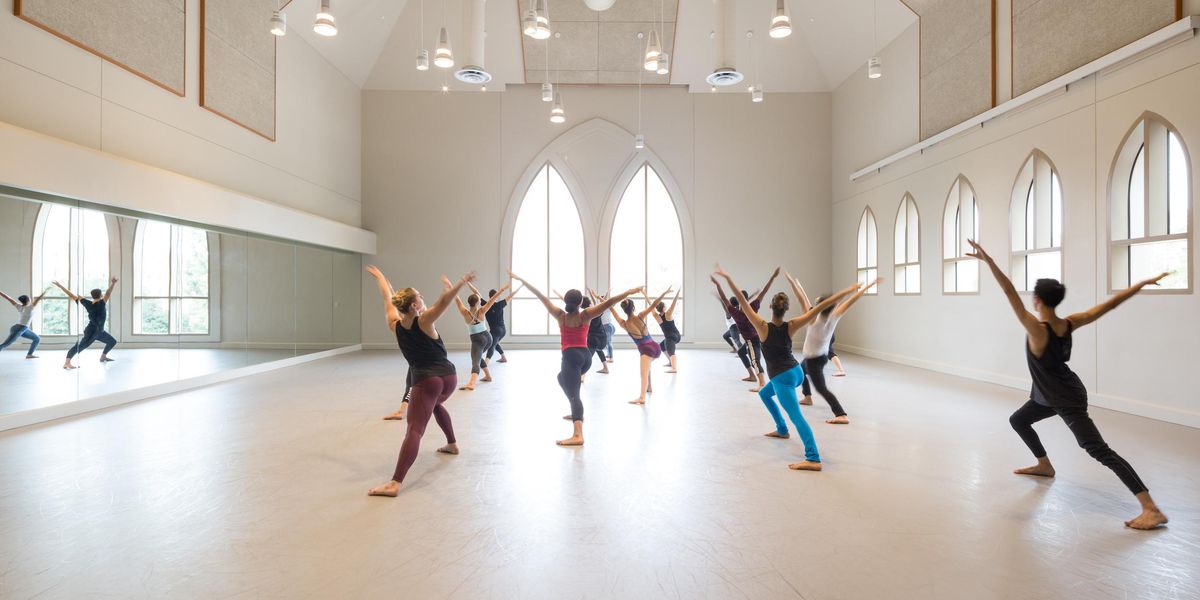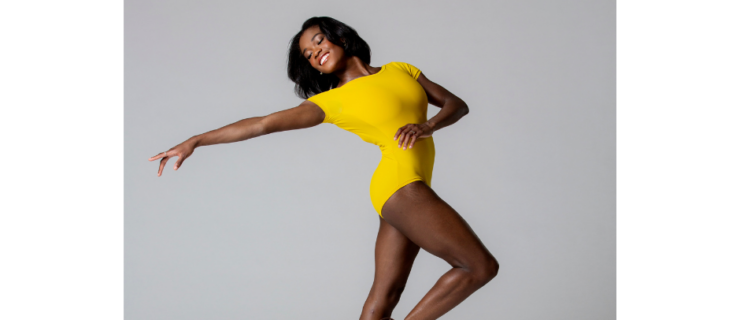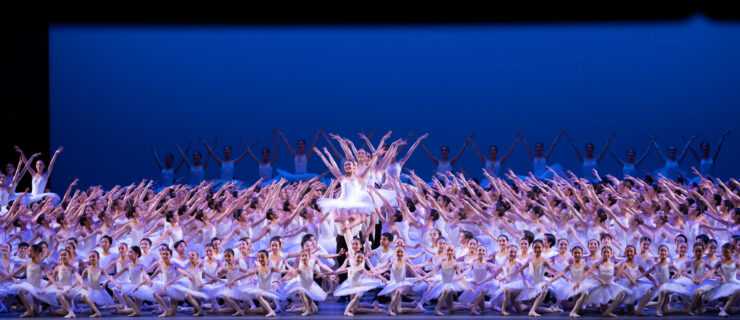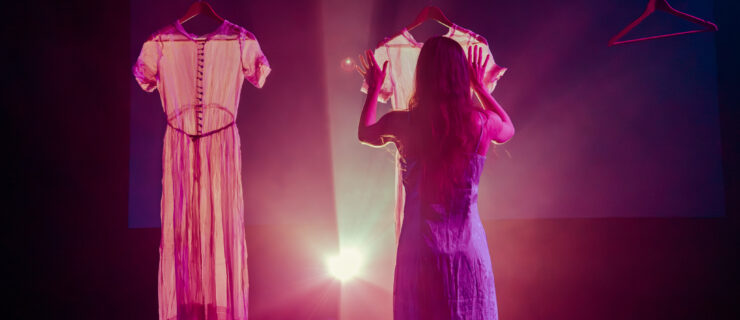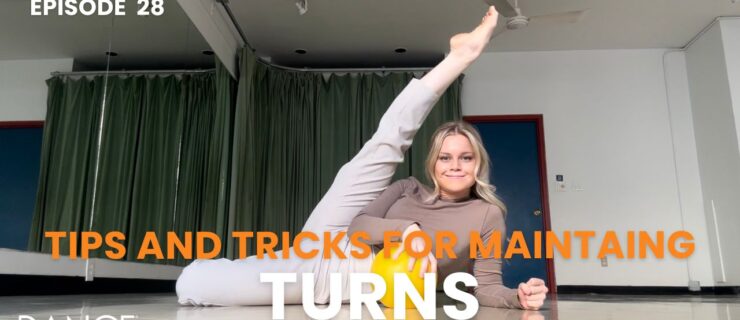Make It New
When little is left to rebel against, it can sometimes seem like dance has already exhausted all choreographic possibilities. So what still feels groundbreaking today?
As lines between genres are erased, the spaces in which we see dance are also shifting. Here, flex dancers rehearse at the Park Avenue Armory. PC Stephanie Berger.
In 1995 the French conceptual choreographer Jérôme Bel caused a scandal with his self-titled work in which naked performers peed on the stage. Not a little frustrated, the clean-up crew renamed the maintenance fee from prime de feu to prime de “pipi.” The avant-garde of dance has always left its messes. More than a century earlier, the term prime de feu (or “premium of the spotlight”) was employed when dancers would get a little too close to the then state-of-the-art gas lamps and catch fire, the supposed price to be paid for the aesthetic revolution that was Romantic ballet.
Zoe Scofield. PC Stephen Delas Heras.
Nowadays the Romantic aesthetic is old hat—no matter how brilliant the lead, every Giselle is met with nodding heads—as is the 20-year-old urination brouhaha. So what kinds of messes are being made today? Where can you find a rioting audience like the one at the premiere of
Le Sacre du printemps? Or the electric atmosphere of Agon? What still has the power to shock an audience today?
Dance is an art with a tenuous relation to its past. The studio and stage might be empty, but they are haunted by the ghosts of everything that’s happened there before. “When you’re making new work, your strongest reference point is other works,” says BalletCollective director Troy Schumacher. You’d think that the ephemerality of the form would make it more conducive to being in and of the present. But sometimes the opposite is true. Retrospectives are now commonplace, even in the case of postmodern choreography which wasn’t supposed to have the technique needed for repertoires to survive.
It’s difficult to remember that these works were made possible only by the fiercest acts of courage and imagination. That which used to be transgressive
is now comfortably institutionalized, when at one point people didn’t know whether it was art at all; Yvonne Rainer once noted that a viewer said of her, “She walks as though she’s in the street!” when that was, of course, her point. If the artistic cusp follows the tradition of rebelling against tradition, it would seem that we’re at something of an impasse because there’s nothing left to rebel against. Perhaps this is why, since the beginning of the 2000s, there’s been talk of the exhaustion of choreographic possibilities. In 2012, a theoretically inclined coterie at the Museu d’Art Contemporani de Barcelona (influenced by the French non-dance movement in which Bel played a part) pronounced that “Choreography today is emancipating itself from dance.” A year later, London-based performer Antje Hildebrandt delivered a lecture called “The End of Choreography.” They were making the point that in the postmodern (post-postmodern?) vein, choreography has become so un-dance-like that it could only move forward by not being dance at all.
It’s as if everyone is rushing to the once-living body in order to pronounce it a corpse. The impulse probably comes not from a lack of creative possibilities—this is logically impossible—but from a wild diversification of the means and modes of dance. There is no longer a singular narrative, nor even a double (uptown/downtown) one, which makes it much more difficult to describe its current pulse. The distinctions between staid classifications of genres, techniques and platforms are being erased. We are being asked, as Susan Sontag once stated of changing artistic values, to enter into “a new, more open way of looking” when confronted with a pluralistic sensibility.
The spaces in which dance is presented are shifting and changing, (hello, museums!) which in turn changes the way we experience and think of it. Flex dancing is at the Park Avenue Armory. And not only are audiences being asked to look at new kinds of dance on new stages; in the case of immersive dance, they are being asked to do away with the stage altogether. Zoe Scofield, a Guggenheim Fellow whose collaborations with visual artist Juniper Shuey include interactive sculptures, is one of many current choreographers rebelling against the traditional separation between audience and performer. “Our works seek to be permeable, tangible and porous,” she says. “We want to create a container in which the audience can insert themselves with the dancers and makers.” Without the divide of the proscenium, the dancer becomes relatable and human, and in turn we’re made more conscious of the act of looking at her.
Collaborations with artists who work outside the medium do away with the “lights and tights” aesthetic of an autonomous body against a backdrop which predominated during the late twentieth century, allowing it to be considered from other perspectives. “In a significant number of existing, non-story ballets, people bow to each other and perform other similar social interactions that are no longer relevant things to do in contemporary American society,” says Schumacher. “People from outside of the art form should be invited to question some of its conventions—you’re doing that, but why?”
Sleep No More. Photo by Matthew Craig.
All this being said, if dance is supposed to be an ephemeral manifestation of the culture and society in which it is produced, one is struck by the references—old steps, old combinations. New work is being produced at an assembly-line clip despite a limping economy; rehearsals are squeezed in between service-industry shifts at the coffeeshop and gym. “I wish that choreographers would ponder more, and take more time to think, but we live in a high-pressure society in which there is neither time nor money,” points out Juilliard senior Mark Sampson. When a commission comes around, it must be taken up no matter the parameters. “For those that feel such circumstances are a shotgun wedding, they’re up a creek. They can’t readily say no,” says Robert Greskovic, who covers dance for
The Wall Street Journal. “Who doesn’t want work and new exposure? Who doesn’t want a commission fee? Not many. And if they can’t bring themselves to believe in it, they just pretend they believe in it. But if your heart’s not in it, it’s going to show.”
Perhaps the idea of the avant-garde was a false one from the start. The modernist adage of “make it new” is itself a very old thing; poet Ezra Pound coined the phrase based on an inscription found on a Chinese wash basin from nearly four thousand years ago. And art is not a science: The new does not necessarily replace or outdo the old. It can just be. Observing the changes from one dance to another, from one decade to the next, can be fascinating, but these changes come about not from an inevitable, zeitgeist-fueled march, but from the private, sometimes painful negotiations of the choreographers and dancers. “There are ways to frame and contextualize your work other than asking whether or not it will be remembered by historians,” says Scofield. “So yeah, everything has already been done. I’m not interested in positioning my own work as being new and inventive; those are other people’s values and desires. I’m just interested in making what I make.”
